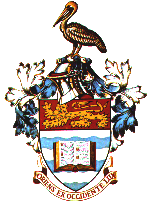





Transposons
TRANSPOSONS
Chapter 17 in P.O.G (1st ed.)
Fig. 17.2 & 17.6
- Mobile.
- Transposable genetic elements.
- Stretches of DNA capable of moving from one site in the genome to another.
- If inserted within a gene, inactivate or disrupt gene function
(transposon mutagenesis).
Called ‘selfish DNA’, molecular parasites but some transposons encode beneficial genes.
Bacterial Transposons
First indicated by formation of spontaneous mutants that reverted by deletion of inserted material.
First isolated were insertion sequences (IS) (remember F plasmid integrates at IS to give Hfr by recombination between homologous IS)
IS are also capable of transposition at low frequency and this involves illegitimate site-specific recombination.
Transposons mediate their own transposition. They encode the proteins concerned with the transposition process.
IS elements only carry genes involved in transposition.
Each IS element possesses short
inverted terminal repeats that are not totally identical at either end.
Fig.
- Repeats are usually 15-25bp, closely related e.g. IS1 terminal repeat: 18/23 (the 18 bp at the left end of IS1 can be found in inverted order within the 23 bp at the right end).
target site duplication.
Sequence of host DNA at site of insertion is duplicated, so IS flanked by short direct repeats.
Fig.
For most transposons, the
sequence of the direct repeats is different in each transposition event, but the length is constant – target sequence not defined just number of bases involved.
Some IS Elements
|
|
Length (bp) |
Inverted Repeats (bp) |
Direct Repeats Generated |
|
IS1 |
768 |
18/23 |
9 |
|
IS2 |
1327 |
32/41 |
5 |
|
IS3 |
1400 |
32/38 |
3 or 4 |
|
IS4 |
1428 |
16/18 |
11 or 12 |
|
IS5 |
1195 |
15/16 |
4 |
|
g
d |
5700 |
35 |
5 |
So a bacterial transposon has a characteristic structure – and when this is encountered in the DNA, it is assumed that the region between the direct repeats is an IS.
IS elements only encode proteins associated with transposition – the transposase enzyme and maybe a few regulatory proteins
However, organisation of genes on IS elements can be complicated.
e.g. IS5
- 2ORFs, one with either strand and one complementary contained within the other – overlapping and antiparallel
- Other IS elements similar except IS1 which has two parallel, non-overlapping ORFs
- Bacterial transposons other than IS carry other markers such as drug resistance genes in addition to the gene functions concerned with transpositions
- These are named Tn followed by a number
- e.g.
COMPLEX/COMPOSITE TRANSPOSONS
–
These have a central region flanked by ARMS – arms can be direct or, more commonly, inverted repeats
Some composite transposons have arms which are made up of IS elements.
- e.g.
Tn9 has identical direct repeats of IS1 at either end and carries camR (chloramphenicol resistance)
- Some arms resemble IS elements – known as IS-like elements; some arms are closely related e.g. IS10L differs from IS10R by 2.5% sequence divergence
- Arms of Tn5 (IS50L and IS50R) differ by 1 base pair
- This generates and ochre (VAA) nonsense mutation in IS50L which also generates a promoter from which RNA polymerase can read through the central region and transcribe the neoR gene
- This produces neomycin phosphotransferase II which is responsible for resistance to neomycin, kanamycin and G418 antibiotics
- Transposition proteins produced by IS50R only
Two IS elements can transpose any sequence residing between them (within certain distance limits).
e.g. when Tn10 is placed on a small plasmid (using recombinant DNA techniques) so that the IS10 modules flank tetR or the other part of the plasmid, transposition can occur to give Tn10 or a new transposon with the IS10 modules in inverted repeat positions flanking the new sequence between them.
USES OF TRANSPOSONS
To study transposition
as in previous example with Tn10 to show transposition of intervening material
to show that DNA replication is involved in transposition
Using 2 plasmids in a bacterial cell, one plasmid carrying a transposon. Progeny clones can be selected in which the other plasmid carries the transposon. If these clones are isolated and analysed, both plasmids are shown to carry the transposon, implying DNA replication.
- Transposon mutagenesis
Use of transposons to increase rate of mutation due to insertional inactivation (transposon inserted into coding sequence inactivates gene expression)
- As cloning vehicles
- transformation vectors for transferring genes between organisms
- also drug resistance genes encoded by many transposons are useful in the development of plasmids as cloning vehicles
THE MECHANISM OF TRANSPOSITION
(Mostly figures, see pp 480-481, figs 18.4, 18.5 & 18.6).
You may read also about transposable elements in eukaryotes.
![]()
![]()
![]()
![]()
![]()

![]()
![]()
![]()
![]()
![]()